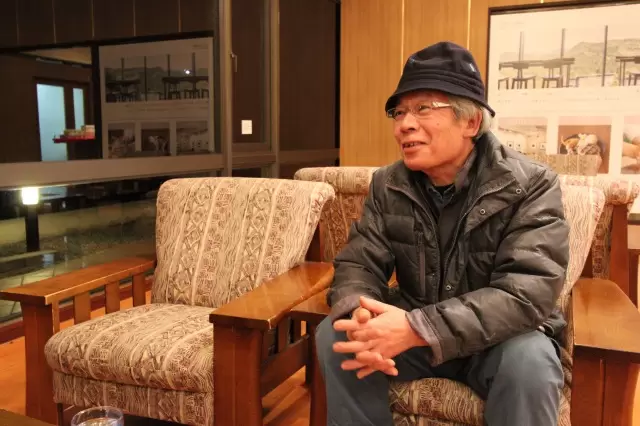A mountain of artisans. Encounter mountain guardians, carpenters, and woodworking craftsmen on a tour with an architect using traditional construction methods. A story of a tree traveling 500 years.

Yoshino Forestry has a history of 500 years. Yamamori, who are responsible for this, pass down the techniques and spirituality of raising trees from parents to children, raising a single cedar or cypress tree for generations. The beauty of the wood is also reflected in the way the yamamori put their hands together in gratitude to the mountain gods before cutting down the trees that their ancestors had cared for. Each beautifully grown tree is carefully cut down by the hands of the yamamori, car...
The work of the mountain keeper who continues to use the mountain for the future generation after generation

Kawakami Village, located in the upper reaches of the Yoshino River, is one of the centers of Yoshino Forestry. Compared to other forestry production areas, the slopes of the mountains are steep and advanced techniques are required.
We interviewed Mr. Fukumoto, who has been the guardian of the mountain for generations in Yoshino Kawakami Village.
On this day as well, he had parked his car and walked up a steep slope for an hour. From that smile, you can tell that he is very proud of his job as a mountain keeper and has been working there for many years.
A mountain keeper has a wide range of tasks, including maintaining and managing trees that have been nurtured for generations, cutting down trees, shipping them, growing new trees, passing them on to the next generation, and continuing to use the mountains for hundreds of years into the future. I have. In particular, the yamamori of Kawakami Village is said to be the manager, and has the same authority as the yamamochi, and it seems that the yamamori is also entrusted with deciding when to cut trees.
Thanks to the trees and ancestors.
Trees are cut down during the winter season from October to March, when the trees are dry. Kawakami Village's mountain guardians often protect not just one mountain, but multiple mountains. In Kawakami Village, the owner of the mountain land is called 'danna', and some yamamori have several husbands.

Mr. Fukumoto is one of only two mountain guardians in Yoshino Forestry who can cut down large trees. It is said that it takes three generations to grow a 100-year-old tree, and it is said that the day before cutting down a tree that has been carefully nurtured for generations, the sense of responsibility and excitement make it impossible to fall asleep.
When Mr. Fukumoto cuts down a tree, he always offers sacred sake and Sakaki to express his gratitude to the tree and his thoughts for the ancestors who raised the tree.
Yoshino, where many long-aged trees grow, changing times
In Kawakami Village, where Mr. Fukumoto works, there is a 520-year-old tree. Kawakami Village is the birthplace of Yoshino forestry, which has a history of about 500 years. Among them, cedars and cypresses that are about 250 to 400 years old have been raised in Shimodako Village Forest since the early Edo period.
In Yoshino Forestry, trees are said to live three lives. The role of standing on the mountain, the role of being used in houses and products, and the role of making new trees stand out as old materials.
Hundreds of years ago, it has been carefully nurtured for generations, and has been reborn in various forms such as sake barrels, ship materials, and buildings according to the flow of the times.

The trees of Yoshino grow in a harsh environment on steep slopes to produce better quality trees. It is said that a good tree is known from an early age.
In the past, Yoshino cedar was mainly transported using the water flow of the Yoshino River, but around 1980, it changed to being transported by helicopter, and especially in the last few years, the cost of transporting has increased significantly due to the steep rise in fuel costs for helicopters. It is said that the thinned timber and other timber that has been on the market until now is not profitable for transportation costs, and it is said that there is no choice but to dispose of it in the mountains after thinning. Since the trees are grown on steep slopes, it is difficult to maintain forest roads, and helicopter transportation has become the mainstream. Currently, it costs about 2 million yen to operate a helicopter once. Thinned wood over 200 years old is no exception.
At Local Craft Japan, learn about Yoshino Forestry's ultra-long-term thinking, coexistence with nature, and the current state of Yoshino Forestry, feel the essential beauty of traditional Japanese techniques, and create a virtuous cycle for the region. I hope so.
Yoshino Forestry has lived and inherited from the past to the future on a time axis that exceeds the human lifetime.
Next time, we will talk to a wooden architect who builds wooden buildings using ancient techniques using Yoshino cedar.
We will introduce you to the unconventional sights, such as the workshops that inherit the tradition while challenging to update, the daily activities of the craftsmen, and the expressive nature that continues to inspire creations. In order to share the richness of the future with you and hand down the crafts of Japan's production areas to the future, we will continue to discover and disseminate the charm of production areas today. For travelers, by interacting with craftsmen and craftsmen, connecting the past and the future, a rich time to deeply appreciate the day called today. To the production areas, help hand over the rich crafts of Japan to the future. Through their travels and spending time in conversation, they will create new discoveries of Japan and connections with new friends.
The contents on this page may partially contain automatic translation.




































![[Latest] Complete Guide to atmos Exclusive Sneakers and Special Edition Models | Apparel and Upcoming Releases](https://resources.matcha-jp.com/resize/720x2000/2025/12/12-252706.webp)